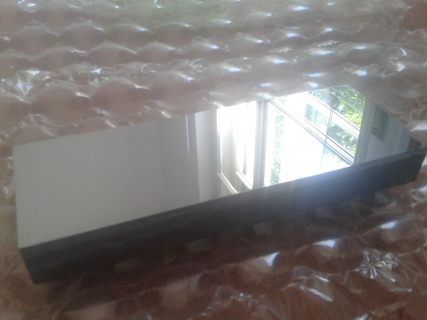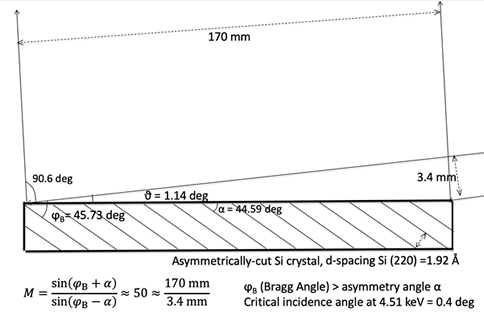| BEaTriX: a facility for testing the modular elements of ATHENA | |
|
The beam expander |
|
|
The beam expander is based on a silicon crystal, cut asymmetrically, i.e., at approximately 45 deg with respect to the (220) crystalline planes. This concept was proposed by Christensen et al. in 1994 ("Expanded beam X-ray optics calibration facility at the Daresbury Synchrotron," Proc. of SPIE, 2011 540). Monochromatic X-rays, incident at a grazing angle (but larger than the total reflection one), are spread over the 170 mm x 60 mm surface of the silicon crystal and are so diffracted at a nearly-right angle. We obtain a parallel beam as wide as the asymmetric crystal, therefore largely covering the entral pupil of the SPO MMs of ATHENA. |
|
 |
 |
| The beam expanding crystal in silicon, as asymmetrically-cut and polished at IMEM-CNR (Parma, Italy). | The principle of X-ray beam expansion by an asymmetrically-cut crystal. The X-ray beam spreads on the surface, but in the diffraction process it is "reflected" by (220) crystalline planes that are tilted by 45 deg with respect to the outer surface. As a result, the beam is deviated at a nearly-right angle. |
| Banner image (by Stefano Basso): BEaTriX facility - INAF Brera Astronomical Observatory site of Merate (LC) - Web site credit: B. Salmaso, D. Spiga, and the BEaTriX team - M.R. Panzera | |
